
views
- There are no traditional keys or ignitions. Use the key card, fob, or app to get into the vehicle and start it.
- The regenerative braking automatically slows your vehicle if you don’t actively accelerate.
- Shift gears using the stick on the right (or left on the Model S). Move it down to drive and up to reverse.
- Most vehicle settings can be adjusted via the control screen in the console.
Getting into the Car
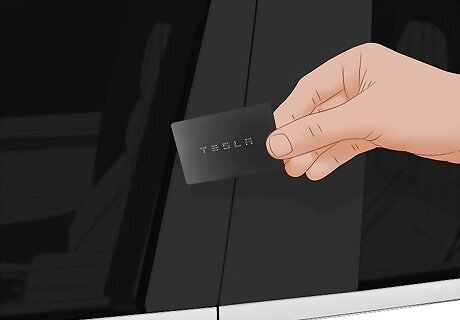
Unlock the car with the vehicle’s key card, a key fob, or the Tesla app. Every Tesla has 3 keys. There’s the key card that came to your vehicle, the key fob you had to purchase separately, and the Tesla app on your phone. Any of these 3 will unlock the car for you. You can 100% keep the key card in your wallet—in fact, most Tesla owners do. The key fob costs $150. It’s basically the same thing as a normal remote key. It can turn alarms on, unlock the car, start it remotely, etc.
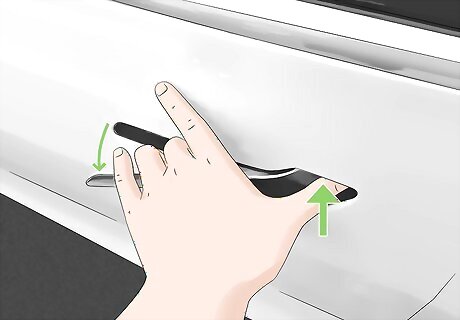
Press on the door handle gently if it doesn’t open automatically. If you’ve got the key fob or key card on you, the door handles should open for you without you doing anything. If they don’t pop open, press the unlock button on your key fob or tap the key card against the handle. As a last resort, gently push on the right side of the handle to manually open it. In the app, just press the “unlock” button on the main screen to open the handles.
Starting the Car
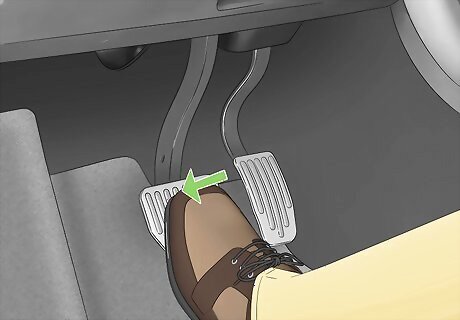
Press the brake pedal to turn the vehicle on. Your Tesla is 100% electric, which means there isn’t a traditional ignition system where you need to crank the engine with a key. Simply press brake pedal down and your vehicle will automatically start up. The car won’t make any noise, which can be kind of weird if you’ve never driven an EV. You can tell the vehicle is on if the screen is on. If the Tesla has custom profile settings for different drivers, they’ll display on the screen when you get in the car.
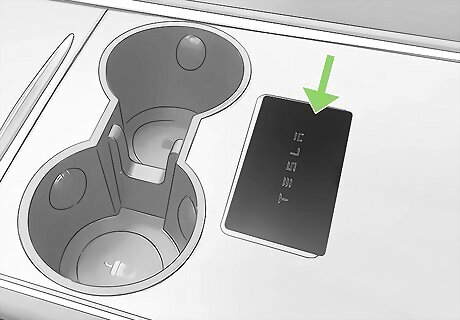
Put the key card behind the cupholder if the car won’t start. Occasionally, the Tesla won’t register the presence of the key card (or key fob). If you get an error on the screen or the car won’t start, put your card or fob right behind the cup holders in the middle console. This is where the RFID transmitter is located, and your card/fob should register with the vehicle. Fun fact, depending on your Tesla’s model and trim, you may be able to charge your iPhone wirelessly in that middle console by just setting it down.
Putting the Car into Gear
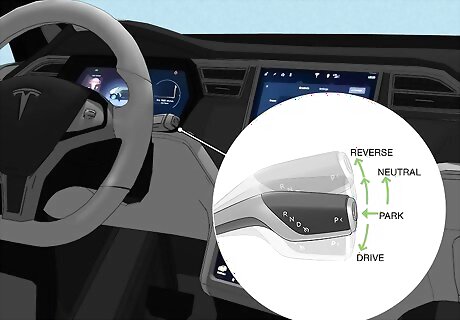
Select the drive mode using the stalk on your right. A lot of the systems in your Tesla will resemble a traditional gas vehicle. You’ve got the turn signal on your left, a traditional wheel and horn, etc. One of the biggest differences is how you shift, though. Use the stick (called a stalk) behind the steering wheel on the right to change your gears. Here are the settings: Reverse: Push the stalk all the way up to the highest setting and release it. Neutral: Briefly push the stalk up to the first setting if you’re in drive, or down if you’re in reverse. Drive: Push the stalk all the way down to the lowest setting and release it. Park: Push the button at the very end of the stalk.
Driving
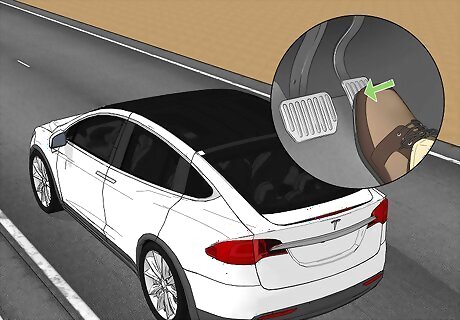
Drive as normal, but don’t expect the car to roll forward. There’s nothing unique about the way you steer or navigate a Tesla compared to any traditional vehicle. However, you should be aware of the “creep” setting. By default, “creep” is off. This is the slow, forward idle that traditional cars have when you take your foot off of the brake and don’t touch the brake. Teslas will not idle forward—you must tap the gas pedal. Change the “creep” setting on the touchscreen by pressing “controls” and then “pedals & steering.” In “stopping mode,” turn the creep on. Most Tesla drivers like keeping creep off since they don’t have to hold the brake down at lights. However, it can take a lot of getting used to if you’re new to Teslas.
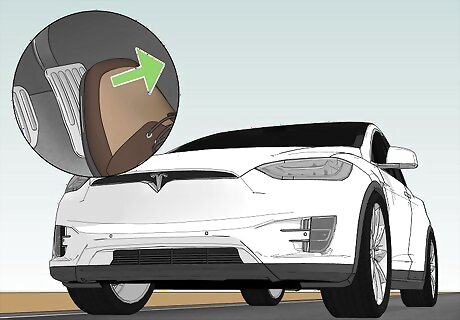
Brake slowly by taking your foot off of the acceleration. Teslas have regenerative brakes that use your vehicle’s forward momentum to charge your battery on the go. When you’re driving and you take your foot off the gas pedal, your vehicle will begin to brake slowly. This might be hard to get used to at first, but you’ll master it in no time. You can change the regenerative braking system and adjust the sensitivity (or turn it off entirely) by pressing “control,” “pedals & steering,” and “regenerative brakes.” A lot of Tesla drivers will actually only use one pedal to drive. They’ll accelerate when they want to go fast, then let up on the accelerator to slow down and brake. They’ll only use the actual brake pedals in emergencies.

Refer to your manual to turn on self-driving and autosteering. There are four distinct autopilot options you can subscribe to as a Tesla owner: autopilot, autosteering, auto lane changing, and full self-driving. How you turn these settings on differs from model to model, so refer to your manual to find the specific stalk adjustments you need to make to activate assisted driving modes. You must enable autopilot settings in the “driving & steering” menu before it will work. Autosteering specifically will help you stay in your lane while you’re driving a predetermined route. Auto lane change will safely switch lanes for you when you turn on your turn signal. The difference between autopilot and full self-driving is that full self-driving will do everything for you (turn, accelerate, park, etc.). Autopilot will keep your car in the lane it’s supposed to be in and drive for you on the highway.
Turning the Vehicle Off and Getting Out

Use the stalk and the button at the end of it to shut the car down. When you’re parked safely and ready to leave the vehicle, shift the vehicle into park and press the button at the very end of the stalk to shut the car off. If you’re driving a Model Y, it’ll also power off automatically when you walk out of the car with the fob or key card. Your vehicle will also shut off automatically if you leave it on in park for more than 30 minutes—even if you’re in the driver’s seat.
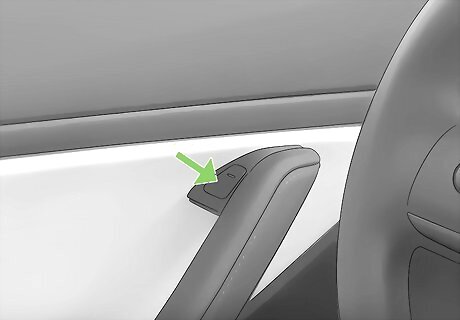
Open the door using the button on the side panel’s hand grip. Don’t worry—you aren’t trapped inside the car. See that little hand grip for your left hand? Wrap your hand around it and search the upper portion of the grip for a small button. Press it and gently apply pressure to the door to open it.
Additional Components Unique to Teslas

Use the control screen to adjust the chair, mirrors, and wheel. There are no buttons or knobs to change the position of your seat and whatnot, so use your profile settings. Press the “profile” button on the main screen and press “new profile.” Then, make all of the changes to the seating angle, mirrors, and whatnot using the sliders and buttons on the screen. Save the settings and you’re good to go! You make most secondary adjustments and changes via the touchscreen, actually. This includes changing the AC, opening the glovebox, opening the trunk, using the GPS, and changing Tesla subscription settings.
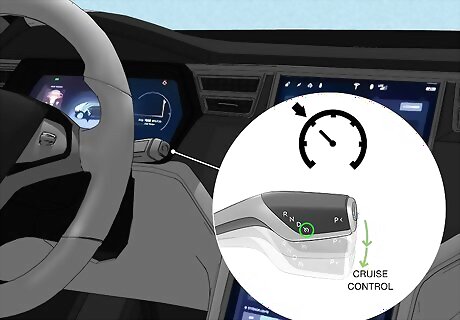
Set cruise control by pressing down on the stalk twice. If you want to set the cruise control on the highway, quickly tap the stalk down twice to lock your speed in. If you have a Model S specifically, press the stalk on the left inwards to turn the cruise control on. With the cruise control on (on any model), gently move the stalk you used to turn the cruise control on up to increase the speed, or down to decrease your speed. The cruise control will shut off automatically whenever you press the brake pedal.
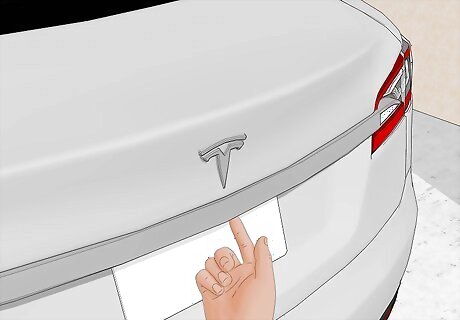
Open the trunk by touching the switch under the handle. So long as you’re holding the key card or fob, you can unlock the trunk by pressing the switch directly underneath the rear trunk handle. You can also open the trunk using the trunk button on the fob, if you have one. You can also open the trunk using the app on your phone or the touchscreen button on the main screen.

Power cycle the vehicle if any settings don’t work or the car gets buggy. There are a ton of computer components and settings in your Tesla, and your car can get buggy or laggy the same way a normal computer might. If anything ever feels “off” or you get error codes, run a power cycle. To do this, shift to park. Then, select “controls” followed by “safety” and “power off” on the touchscreen. Touch nothing for at least 2 minutes and then press the brake to turn the car back on. The power cycle is sort of like rebooting your Tesla. Your vehicle will check each electrical system and setting while it powers back on.




















Comments
0 comment